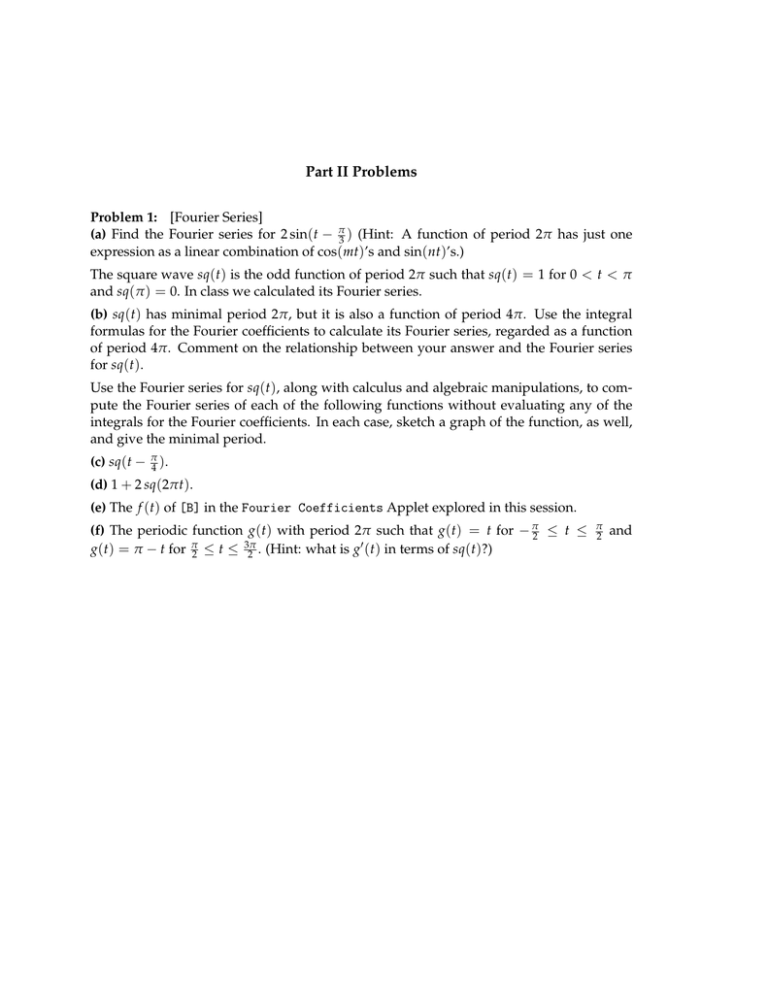− ( )
advertisement

Part II Problems Problem 1: [Fourier Series] (a) Find the Fourier series for 2 sin(t − π3 ) (Hint: A function of period 2π has just one expression as a linear combination of cos(mt)’s and sin(nt)’s.) The square wave sq(t) is the odd function of period 2π such that sq(t) = 1 for 0 < t < π and sq(π ) = 0. In class we calculated its Fourier series. (b) sq(t) has minimal period 2π, but it is also a function of period 4π. Use the integral formulas for the Fourier coefficients to calculate its Fourier series, regarded as a function of period 4π. Comment on the relationship between your answer and the Fourier series for sq(t). Use the Fourier series for sq(t), along with calculus and algebraic manipulations, to com­ pute the Fourier series of each of the following functions without evaluating any of the integrals for the Fourier coefficients. In each case, sketch a graph of the function, as well, and give the minimal period. (c) sq(t − π4 ). (d) 1 + 2 sq(2πt). (e) The f (t) of [B] in the Fourier Coefficients Applet explored in this session. (f) The periodic function g(t) with period 2π such that g(t) = t for − π2 ≤ t ≤ g(t) = π − t for π2 ≤ t ≤ 32π . (Hint: what is g� (t) in terms of sq(t)?) π 2 and MIT OpenCourseWare http://ocw.mit.edu 18.03SC Differential Equations�� Fall 2011 �� For information about citing these materials or our Terms of Use, visit: http://ocw.mit.edu/terms.





